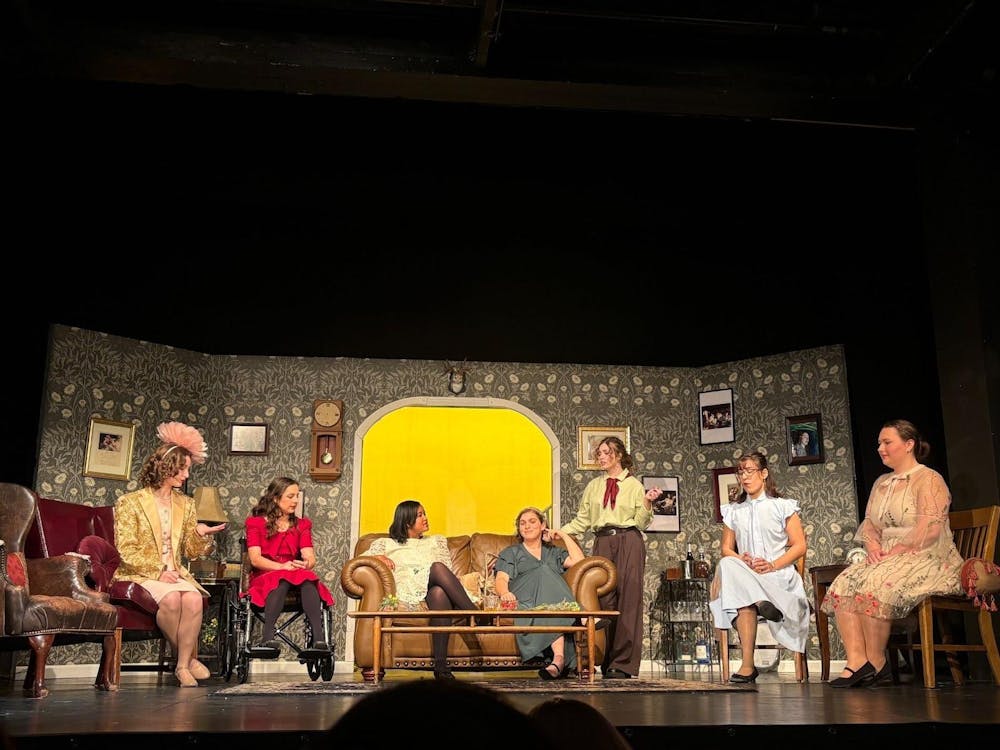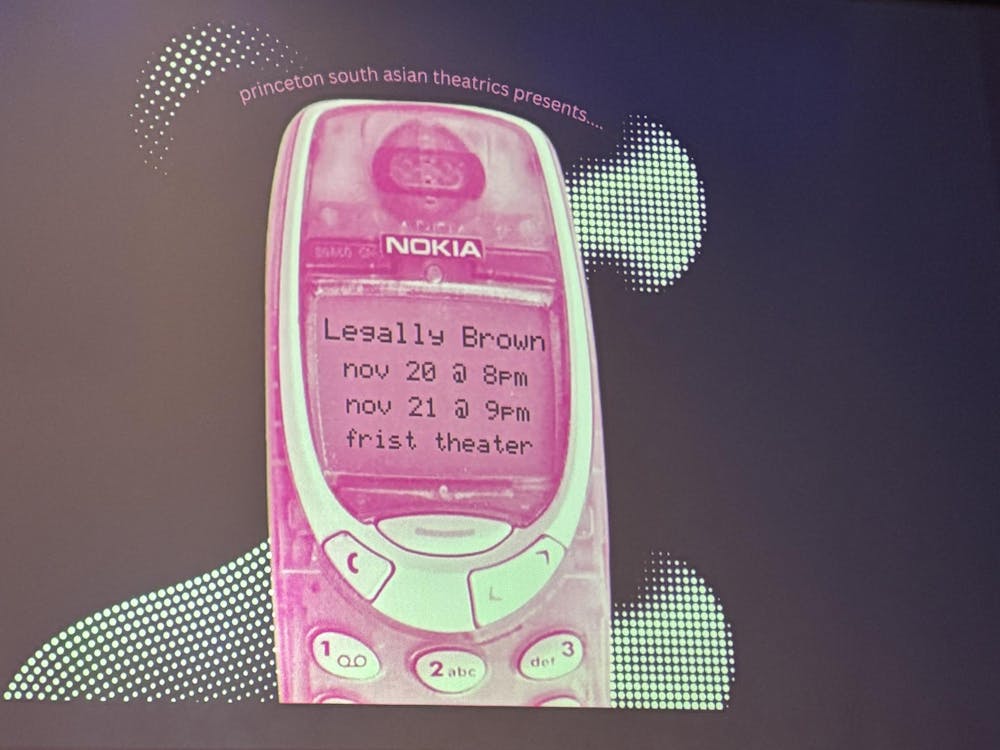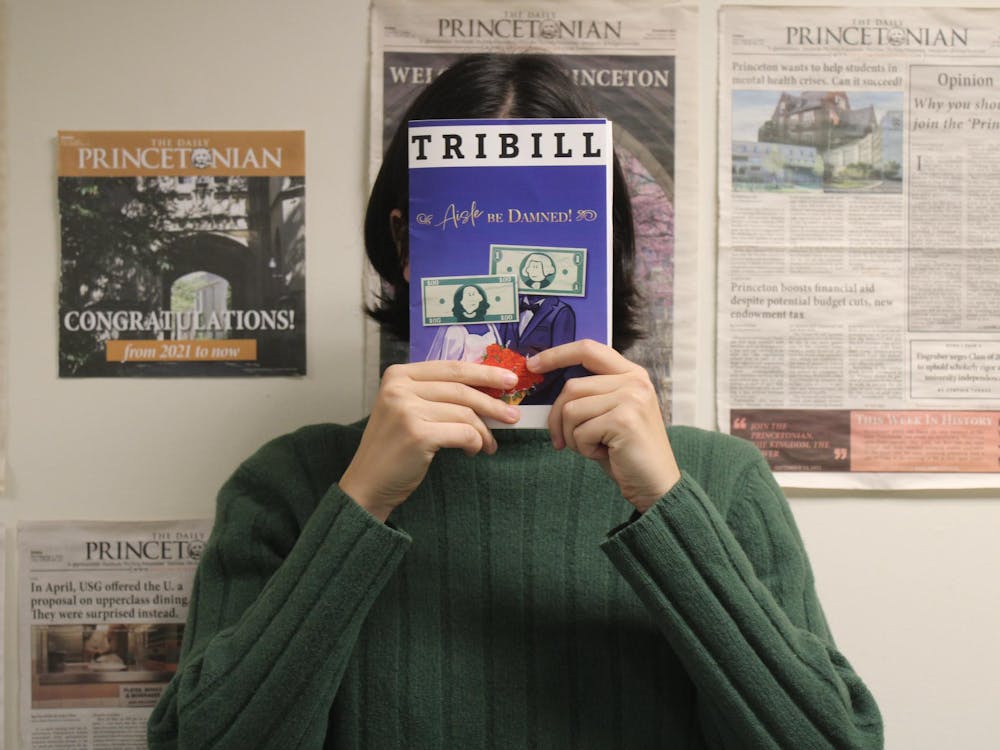When an artist confronts his materials, a battle must be waged. The painter’s bare canvas, the poet’s blank page, the empty stage that awaits the actor, the immobile dancers waiting for the choreographer to give them motion — every piece of art begins with a terrifying void that dares you to fill it. And every move you make to do so sets up new conflicts; the terror never goes away.
Theatre Intime’s production of “Red,” written by John Logan and directed by Oge Ude ’16, blows this tension up to such an enormous size that it fills every corner of the Murray Theater. The play chronicles a two-year period in the late 1950s when Mark Rothko (whose paintings are currently on exhibit at the University Art Museum) worked feverishly on a commission for the Seagram building in Manhattan, creating what we now know as “The Seagram Murals.” Historically, these years were the apex of Rothko’s fame, income and reputation — “No other painter comes close,” preens Rothko, played by John Fairchild ’15, in the opening scene. But Rothko, at the peak of his fame, is also on the precipice of selling out. Enter Ken, played by Ryan Gedrich ’16, an aspiring artist and Rothko’s new assistant, who over the course of their two-year relationship, matures from timid admirer to disparaging peer as he challenges Rothko’s hypocrisy. In their rapid-fire debates about how to look at art, they indirectly teach us too. Within the exciting crackle of Logan’s dialogue lies a crash course in art appreciation, should we choose to accept it.
The first time we see Fairchild’s Rothko, he’s downstage and center, staring menacingly out at the audience. We come to understand momentarily that he’s examining one of his massive murals. He’s dimly lit, but we can tell by the rigid set of his neck and shoulders that he’s staring ruthlessly, examining the work before him with a savage eye. Rothko is already well inside the painting — Ude’s production succeeds in bringing us in there with him.
It’s challenging to play a character who speaks in grand, sweeping statements about art and the workings of time. But when Fairchild roars, “I am here to stop your heart, you understand that? I am here to make you think! I am not here to make pretty pictures!” I felt nothing but wonder — not a whiff of suspicion. Setting aside how impressive it is to watch a 21-year-old successfully play a much older man, Fairchild captures Rothko’s vanity, brashness, spiky narcissism and crippling self-doubt with nuance and subtlety. His portrayal is one that constantly reminds us that Rothko is of a generation that aspires to be taken seriously, yet he remains strangely likeable throughout.
I can sense your trepidation. You wonder how a two-man play about capital-A Art can avoid becoming stagnant and losing itself in esoteric conversations about art. Never fear — this production makes intelligent choices to keep the story clear and captivate our attention. For instance, the set, designed by Marissa Applegate ’16, features reproductions of “The Seagram Murals” by David White ’15. Comprised of enormous panels that float against the black walls of the theater, the set is not the actual construction of a studio. Rather, it represents an artistic interpretation of a studio. The result is the perfect cave of consciousness for Ken’s and Rothko’s personalities to clash. Furthermore, Gedrich and Fairchild constantly exchange bits of dialogue that nip at the other’s heels, pressing ever-forward at an impressive and merciless allegro pace, pumping each scene full of energy. The most obvious innovation of this production of “Red” is the incorporation of music and dance. The music is breathtaking. Composed by Sam Kaseta ’15 expressly for this production, the music is at times a low hum beneath dialogue, transforming words into poetry, and at times acts as the representation of the movement and life of the paintings. The dance, though beautifully executed, seems more out of place in this play. It’s a mark of the production’s success that I found many of the dance sequences unnecessary — the play stood on its own. On occasion, I found the dancers to be compelling illustrations of Rothko’s demons, but during their sequences I often found myself waiting anxiously to return to the studio, and the unfolding story. Additionally, although the pace of the dialogue was pleasantly brisk, long blackouts and somewhat clunky set changes in this production may leave the audience frustrated.
That said, every time the lights come up, this play hits the ground running. In one particularly thrilling, non-verbal sequence, Gedrich and Fairchild position themselves upstage center with their backs to the audience to prime a huge canvas together. They burst into frantic action, covering its vast expanse with quick-drying maroon goo as the music hums,underscoring their sheer athletic and artistic exuberance.White becomes maroon, and your heart pounds out of your chest. When it’s complete, it pulsates with movement and life and sweat and the memory of bunching muscles. You think of the person who, after seeing the maroon square in a museum, says, “My 6-year-old could paint that,” and you’re suddenly furious at their lack of understanding. When the two men step back from the canvas, the whole audience releases a collective breath — for a few moments, everyone’s heartbeats are in sync. Then, the music stops. The spell lifts, and we remember where we are.
If you’ve got any blood in your veins, you’ll lean forward into this production of “Red,” plunging into its formidable existential tensions, as illustrated by the colorful battle between the vivacious red and damning black of Rothko’s murals. At the end, we’re left with an important question: Is life all about desperately pushing back the black? Or should we strive to achieve some sort of balance between both colors? The answer eludes me, but my god, it’s an exciting question.
4.5 out of 5 paws

Pros: Compelling performances, powerful visual moments
Cons: Pace interrupted by long blackouts, dance sometimes superfluous








